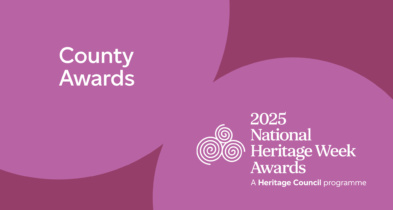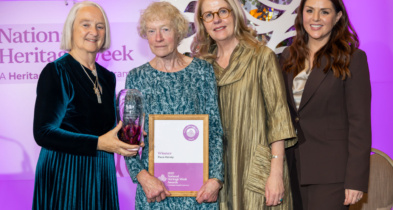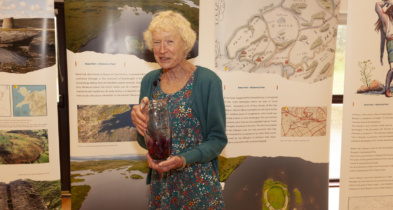
Spread the word: Sharing your event or project

Your heritage event is ready or your project research is completed, it’s listed on the National Heritage Week website and you’re ready to share your hard work with the world.
There are a lot of ways to spread the word about your event or project with your community and beyond, and we’ve outlined a few of them here.
Social media
Social media is a great way to let your audience know about your event or project, provide updates and share the excitement. We recommend using Facebook, Instagram and Twitter to reach your community and the wider public online and they are all free and easy to use. Don’t forget to tag the National Heritage Week accounts and use #HeritageWeek2022 when you are posting.
Facebook
Facebook is widely used, user-friendly, and a great platform for building an online community and engaging local people. It is the most popular social media platform on the Internet and will work well for you if your heritage event or project is accompanied by photos or images, or if you plan to share videos with your audience. It will also allow you to tell stories and provide descriptions to accompany the visual content. To make your content reader friendly, we recommend that you keep your posts to 100-150 words. It is also worth thinking about giving your followers a reason to engage with your posts. You could ask questions, invite feedback or use previous comments as the inspiration for new posts.
The Facebook Live feature is very useful if you are organising an online event and want to broadcast it on the Internet, and save it as a recording to be shared widely afterwards. You can also promote an in-person event on Facebook by creating an ‘event’ connected to your organisation’s main page.
Instagram
If you are specifically trying to connect with a younger audience, it might be worth considering sharing your heritage event or project on Instagram. This is a fast-growing social media platform, with the majority of users under 30 years of age.
Instagram is all about images. If your event or project is based on photographs, images or graphics, it is worth considering Instagram as the social media platform to promote your heritage project. Like Facebook, you can share images, videos and text with your followers. We recommend using a designated hashtag so that your audience can follow your event or project.
Twitter
You might also want to consider Twitter when you are weighing up your options for social media. When it comes to sharing content, Twitter is unlike either Facebook or Instagram. The value of Twitter is its brevity: the length of each tweet is capped at 280 characters.
You can use Twitter posts to attract users to your website / blog, YouTube channel or podcast, and to alert your audience to event updates or top-line research findings. If you’re new to Twitter, you’ll need to build your followers for greatest impact. You can do this by identifying key influencers in your project topic area (e.g. heritage experts or other organisers) and following them; following your target audience; retweeting relevant users’ content; sharing compelling content (including images and video), and using hashtags to create a following.
For much more detail on making the best use of social media for sharing your event or project, check out our 2021 blog post.
Communicating with local media
Reaching out to local media outlets is another great way to spread the word about your event or project. Begin by making a list of local newspapers, radio stations and websites who might be interested in creating a story around your Heritage Week work.
When formulating a press release or pitch to the media, think carefully about who your target audience is. Which outlets will your audience engage with? How can you create interest among this group?
When writing a press release, be sure to begin with a snappy opener. The first sentence should communicate a unique angle of your event or project’s story. Think about what will grab a reader’s attention and write a strong sentence that will start a conversation. Perhaps your event is celebrating a 10th anniversary or perhaps your project is presenting brand new research. News desks will look at stories that stand out. In your press release, the following paragraphs will expand and amplify your angle, providing more detail about your research, the future of your event or project, or any challenges your organisation has overcome. Be sure to keep your language simple and clear. Explain any technical or specialist terms and think about a reader who may not have prior knowledge of your heritage area.
It is also important that you include names and contact information in your press release so that media outlets can get in touch with any queries or requests for an interview.
A picture is worth 1000 words, so don’t forget to send images along with your press release. Photos should be high quality and interesting — something that will stand out to a news editor. Be sure to caption any photos correctly and with detail.
If media outlets don’t pick up your story, you can always try again. Local news is a constant cycle, and reporters are always looking for a new angle, especially if there are any updates or developments in your event or project.
For further advice or recommendations of media outlets in your locality, you can get in touch with your Local Authority Heritage Officer.
Logos and branding
Branding your event or project is an important way to distinguish it as a part of National Heritage Week. When your community sees our signature pink spirals alongside your own logo, they will know to look for your event or project as a part of National Heritage Week promotions.
National Heritage Week’s Branded Resources page provides various versions of our logo in both English and Irish for you to download and add to any promotional materials such as photos, posters or brochures.
The page also offers press release and poster templates, social media graphics, slides to add to the beginning and end of videos, a PowerPoint template and online meeting backgrounds. Feel free to download these files as you continue promoting your event or project.
Webinar: Communicating your project
For more information on the best ways to share your project with the world, you can watch one of our 2021 webinars, which covers the above topics in more detail. Other webinars relevant to National Heritage Week 2022 are available here.

